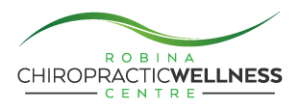

Heel lifts (also known as shoe inserts or shoe lifts) are orthopedic devices designed to elevate the heel inside a shoe.
Medically, heel lifts are often prescribed to address issues related to leg length discrepancy, where one leg is shorter than the other. This imbalance can lead to biomechanical problems, such as uneven gait, hip misalignment, and back pain.
By inserting a heel lift into the shoe of the shorter leg, the height difference can be compensated for, helping to promote better alignment and reducing discomfort.
The way we diagnose legless deficiencies is through the use of x-rays. The reason why we need to diagnose them correctly is because they’re both functional and structural leg deficiencies and we need to be specific as to which one person has or you will incorrectly treat somebody
Heel lifts are also utilized in the realm of sports and physical therapy. Athletes may use them to adjust the angle of the foot and ankle, potentially alleviating strain on certain muscles and tendons.
They can be particularly helpful for conditions like Achilles tendonitis or plantar fasciitis, or severs disease in children where modifying the angle of the foot can help reduce tension on these structures and aid in the healing process.
I have seen applying a heel lift that helps shoulder balance and neck pain. If the foundations are not right then you’ll referred problems up the spine..
BUT The best result I’ve ever seen was in a case of scoliosis.
This person’s pelvis was tilted so much. It was causing a 30° curvature to the spine, and by using a 15 mm heel lift we were able to half that scoliosis. Now I stress, this was a miracle case, and not everybody should expect these results, but I tell you this because if you have scoliosis, then maybe heel lifts could work for you.. Structurally and symptomatically.
All That said, I have had some people who have tried to put heel lifts in their shoes and have got it wrong. They made their knees and their lower back irreversibly worse.
So I do encourage you to get proper medical advice and don’t you think it’s a simple solution.
So, if you think you have leg-length deficiencies.
- If you have scoliosis, if you have low back pain or unbalanced shoulders.
- If you have had a complete fracture of your femur, tibia, and sometimes fibula.
I encourage you to come in so that we can see what’s causing these problems further up the chain.
